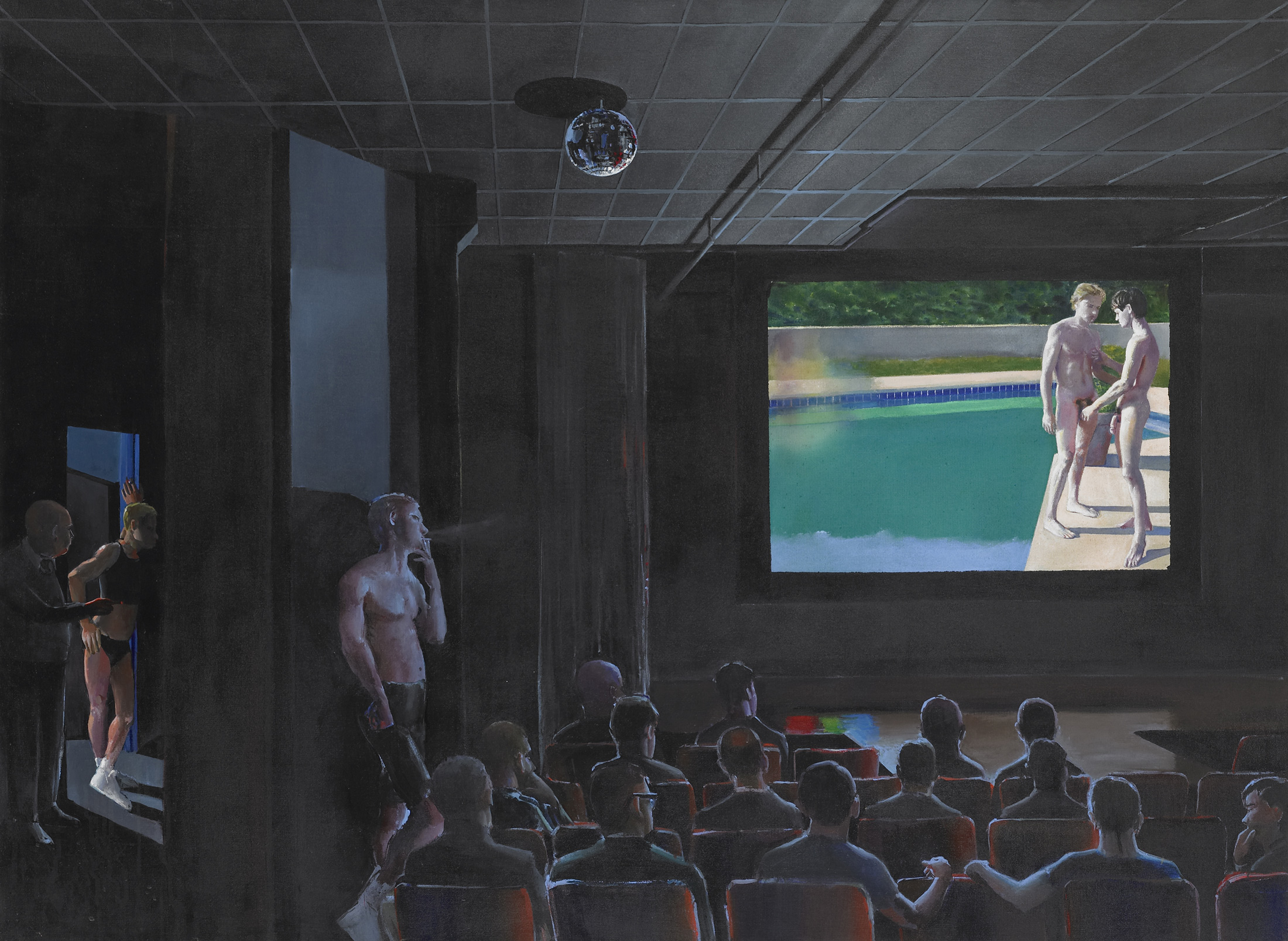
Although you wouldn’t know it from the whitewashed depictions that have prevailed, the history of sex work has always been queer. It has also always been, by necessity, a history of activism. “On Our Backs: The Revolutionary Art of Queer Sex Work,” now on view at the Leslie-Lohman Museum, contends gracefully with these intersecting histories. The exhibition, curated by Alexis Heller, succeeds by highlighting sex workers’ own perspectives on their lives and labor.
“On Our Backs” reminds us that just as queerness is inextricable from the history of sex work, so too are such chronicles incomplete without reference to AIDS. Safe-sex guides for sex workers and calls to action against the epidemic (and the equally lethal state-sanctioned ignorance of the time) are scattered throughout the show, among reminders of its devastation—several wall texts mention the artists’ own experiences with the illness. One such text accompanies letters from smitten clients to one Peter Thomas—a skilled chain mailer (as illustrated by the chainmail cock ring also on display) and escort beloved for his “safer-sex techniques, fist fucking, and conversational skills.” Such layering of materials that delight and enchant over often heart-wrenching historical information is an empathic curatorial gesture that mimics in form the ambiguities of its subject matter.
While several more traditional artworks—such as Patrick Angus’s lush painting of a porn theater-cum-cruising-spot and Shawné Michaelain Holloway’s glitchy webcam video—bear mentioning, it’s the ephemera that forms the unlikely heart of “On Our Backs.” Queer histories, so rarely institutionalized, often take unofficial, intimate forms. Materials are largely maintained not by sanctioned caretakers or estates but rather through genealogies of affinity—heirlooms passed down along lines of friends and lovers. Noteworthy examples on show include a press release announcing the launch of Scarlot Harlot’s May 1990 “Interstate Solicitation Tour” in protest of punitive legislation; a handwritten note explaining “how to pay a hustler,” advising johns that “enticing a hustler with coke instead of cash is unfair because you won’t be contributing to his 1) costly tuition 2) private acting/dancing lessons 3) his bill at Barney’s;” copies of 1990s publications Gendertrash From Hell (by and for trans folks) and Black Lace (by and for black lesbians); and a flyer for California Advocacy for Trollops (CAT), a group promising childcare, legal counsel and bail for incarcerated sex workers.
Despite the care implicit in the survival of these materials, a latent sense of incompleteness remains; every threadbare zine or hand-annotated classified ad is a reminder of what was discarded—whether by accident or else intentionally lost in the gaps between queers, sex workers and HIV-positive folks and the families that so often rejected them. This transience lends what remains, and particularly what is on view here, a thrilling fugitive quality. “On Our Backs” is a show that springs from the leaky and often abject stuff of real life and death: fucking and bleeding and cumming and pissing and cruising, all to the tune of "Cash Rules Everything Around Me".
“On Our Backs: The Revolutionary Art of Queer Sex Work” runs until January 19, 2020.



